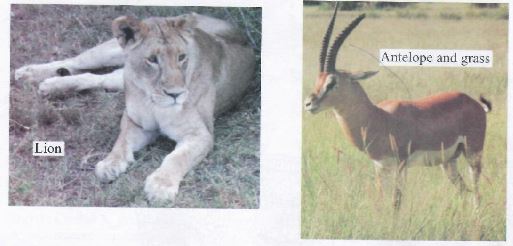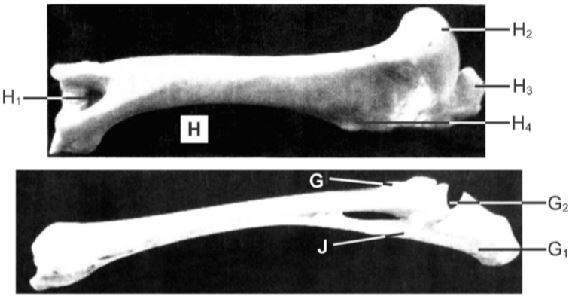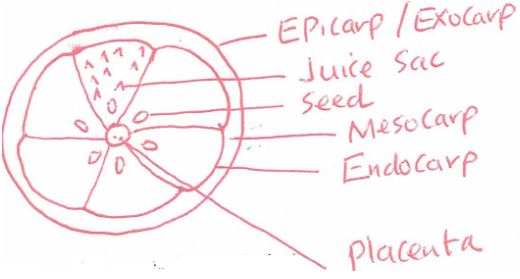Instructions To Candidates
- You are required to spend the first 15 minutes of the 1¾ hours reading the whole paper carefully before commencing your work.
- Candidates should answer the questions in English
Candidates should check the question paper to ascertain that all the pages are printed as indicated and that no questions are missing
-
- You are provided with specimen A
- Name the fruit type that the specimen belongs to (1mark)
- Give a reason (1mark)
- Make a transverse section on specimen A and label the parts. (4marks)
- State the type of placentation of fruit A (1mark)
- Squeeze out the juice from the two halves of specimen A into a small beaker. Using part of the juice and the reagents provided only, test for the food substances in the juice. (6marks)
Reagent Procedure Observation Conclusion DCPIP Benedict’s Solution - Transfer 5ml of lime water in to a test tube. Insert a straw in the lime water in the test tube and blow air in it.
- State the observation made (1mark)
- What was the aim of the experiment? (1mark)
- Account for the observation (1marks)
- What biological process produces the gas being tested in this experiment (1mark)
- What physiological process is involved in the removal of the gas from the body. (1mark)
- You are provided with specimen A
- The photographs below were taken from a grassland ecosystem. Examine them carefully
- Construct a food chain from the organism in the photographs above. (1mark)
- Name the trophic level occupied by the antelope giving a reason for your answer. (2 marks)
- Using observable feature only, name the class in which lion and antelope belong giving a reason. (2 marks)
Class
Reason. - With a reason, identify which of the three organisms has the highest biomass. (2 marks)
- You are provided with photographs of specimen J, G and H.
- Name the specimen labelled J, H, G. (3 marks)
- Which part of the mammalian body were these specimens obtained. (1 mark)
- Name the parts labelled as G1, G2 and H2. (3 marks)
-
- Name the type of joint formed at the proximal end of specimen H. (1 mark)
- Give a reason for your answer in d (i) above. (1 mark)
- State two functions of the part labelled G1. (2 marks)
- The photograph below are different views of a bone obtained from a mammal. Examine them and answer the questions below.
- Identify the bone. (1 mark)
- Give reasons for your answer in f) (i) above. (1 mark)
- Name the bone that articulates on the surface labelled F. (1 mark)
- Identify the view of photograph X. (1 mark)
CONFIDENTAIL
EACH CANDIDATE SHOULD HAVE;
- An Orange fruit
- Scalpel
- Small beaker
- Straw
- 2 test tubes
- Measuring cylinder
- Dropper
ACCES TO;
- DCPIP SOLUTION
- BENEDICT’S SOLUTION
- LIME WATER
CLEAR COLOURED PHOTOGRAPHS
MARKING SCHEME
-
- You are provided with specimen A
- Name the fruit type that the specimen belongs to (1mark)
- Berry;
- Give a reason (1mark)
- It has two scars; succulent.
- Make a transverse section on specimen A and label the parts. (4marks)
- State the type of placentation of fruit A (1mark)
- Axile; / Central placentation; Rej. Axial;
- Name the fruit type that the specimen belongs to (1mark)
- Squeeze out the juice from the two halves of specimen A into a small beaker. Using part of the juice and the reagents provided only, test for the food substances in the juice. (6marks)
Reagent Procedure Observation Conclusion DCPIP To 2ml of DCPIP, add the juice dropwise and shake; Blue colour of DCPIP solution is decolourised;
Vitamin C present; (Ascorbic acid present);
Rej; presence;Benedict’s Solution To 2ml of the juice, add 2mls of Benedict’s solution, shake to mix and heat to boil; Blue colour of Benedict’s solution changes to green/yellow/ orange/ brown; Reducing sugar present; - Transfer 5ml of lime water in to a test tube. Insert a straw in the lime water in the test tube and blow air in it.
- State the observation made (1mark)
- White precipitate observed in the test tube;
- What was the aim of the experiment? (1mark)
- To investigate the gas produced during expiration;
- Account for the observation (1marks)
- Carbon IV oxide produced during expiration; reacted with lime water; to form calcium carbonate; the white precipitate.
- What biological process produces the gas being tested in this experiment (1mark)
- Respiration;
- What physiological process is involved in the removal of the gas from the body. (1mark)
- Diffusion;
- State the observation made (1mark)
- You are provided with specimen A
- The photographs below were taken from a grassland ecosystem. Examine the carefully
- Construct a food chain from the organism in the photographs above. (1mark)
- Grass → Antelope → Lion
- Name the trophic level occupied by the antelope giving a reason for your answer. (2 marks)
- Primary consumer; is herbivore that feeds on grass(producer)
- Using observable feature only, name the class in which lion and antelope belong giving a reason. (2 marks)
- Class; Mammalia
- Reasons - Body covered with fur
- Has ear pinna
- With a reason, identify which of the three organisms has the highest biomass. (2 marks)
- Grass; are the producers and have the highest amount of organic content.
- Construct a food chain from the organism in the photographs above. (1mark)
- You are provided with photographs of specimen J, G and H.
- Name the specimen labelled J, H, G. (3 marks)
- J; Ulna
- H; Humerus
- G; Radius
- Which part of the mammalian body were these specimens obtained. (1 mark)
- Fore arm
- Name the parts labelled as G1, G2 and H2. (3 marks)
- G1; Olecranon process
- G2; sigmoid notch
- H2; Head of humerus.
-
- Name the type of joint formed at the proximal end of specimen H. (1 mark)
- Ball and socket joint.
- Give a reason for your answer in d (i) above. (1 mark)
- Has rounded head/ball like-head
- Name the type of joint formed at the proximal end of specimen H. (1 mark)
- State two functions of the part labelled G1. (2 marks)
- Provides large surface area for muscle attachment
- Prevent overstretching of the arm beyond 180°
- The photograph below are different views of a bone obtained from a mammal. Examine them and answer the questions below.
- Identify the bone. (1 mark)
- Sacrum/sacral vertebra
- Give reasons for your answer in f) (i) above. (1 mark)
- Made up of fused vertebrae /transverse processes of anterior vertebra are large and well developed with articular facets.
- Name the bone that articulates on the surface labelled F. (1 mark)
- Pelvic girdle.
- Identify the view of photograph X. (1 mark)
- Dorsal view.
- Identify the bone. (1 mark)
- Name the specimen labelled J, H, G. (3 marks)
Download Biology Paper 3 Questions and Answers with Confidential - Lanjet Joint Mock Exams 2023.
Tap Here to Download for 50/-
Get on WhatsApp for 50/-
Why download?
- ✔ To read offline at any time.
- ✔ To Print at your convenience
- ✔ Share Easily with Friends / Students




